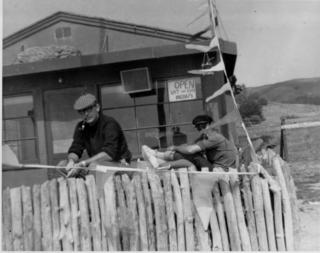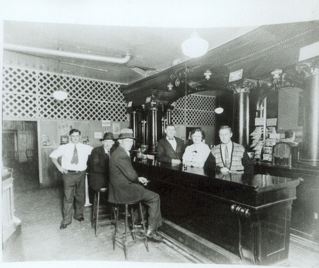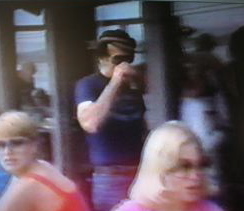Lang Bowen’s Driving Lesson Dilemma
Langston Bowen (most of us called him “Lang” back then) passed away about a month ago; he lived out here for a long time, and the most memorable thing I remember about Lang was a driving lesson gone bad.
So to set the stage, Lang lived at the south end of the road the Miramar beach Inn sits on.This house is now known as the “Hastings House”. After the “outer” breakwater was installed, the currents changed and ripped the beach down dramatically, so instead of walking straight out of the front of one’s house onto the beach, you had to climb down a cliff wherever access was possible. It looks similar to how it is
today, the difference is they hadn’t put the rocks in yet to curb further erosion.
I think that happened in 1970.
Some of these new cliffs stood fifteen feet or more between the road and the sand.
As memory serves me, Lang had one of the first Toyota land cruisers, a large station wagon- sized- four wheel- drive. He volunteered to help this kid Steve learn how to drive. Teaching someone to drive
is a charitable act at best, while at the same time putting one’s life, health and material wealth into a unpredictable teenager’s hands.
Apparently Steve hit the gas a little too hard backing out of the driveway, drove himself, Lang and the landcruiser out of the driveway and across the road a little too quickly to brake. Slowly………
slowly the car tilted until it sat on its back window and bumper facing down into the sand, its windshield facing skyward. It looked kinda like the space shuttle at the launch ramp in Florida .
After all this happened, I came walking upon the scene described. I looked down over the front of the car (I was standing on the road) through the windshield at a very puzzled Lang and Steve gazing back upward at me. Lang, whenever puzzled and unnerved, had a smile with enough teeth to look like the front grill of a fancy Lincoln Continental. With this smile he welcomed me to the scene not seeming to be terribly upset although somewhat bewildered.
So I asked Lang what in hindsight was an absurd question! “Do you need any help”?
Wth his Lincoln Continental “full-teethed” grin dazzling me and the heavens beyond, he laughed and replied “Uh……..no……….no……NO……we’re fine”!
So believing him, I walked away and went on in life with whatever I was doing.
Now, remember there were no cell phones. I have no idea to this day how they got out of the car (but they did), I have no idea how the car made it back onto the road (but it did), and we laughed about it later.
Ahhhhhh, the end of the sixties, we all did inhale, and no none of uswere running for president.









